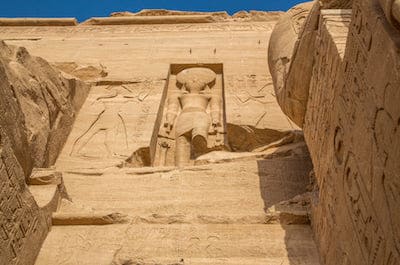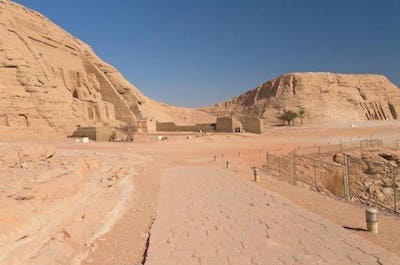The Mortuary Temple of Queen Hatshepsut
The Mortuary Temple of Queen Hatshepsut at El-Deir el-Bahri
Historical Context
- Pharaoh: Queen Hatshepsut, one of the few female pharaohs of ancient Egypt, ruling in the 18th Dynasty.
- Location: Situated in the bay of cliffs known as Deir el-Bahri on the West Bank of Luxor, near the Valley of the Kings.
- Construction Era: 18th Dynasty, New Kingdom period.
Architectural Significance
- Design: The temple, known as Djeser-Djeseru (the ‘sacred of sacred’), is renowned for its grand architecture, terraced structure, and alignment with the Karnak Temple.
- Influence: Reflects architectural elements from the Middle Kingdom temple of Mentuhotep Nebhepetre in the same area.
Features and Artistic Elements
- Terraces: Built on three levels with a connecting causeway, previously linked to a Valley Temple and the Nile.
- Gardens: The lower courtyard originally featured exotic gardens with trees.
- Reliefs: The temple’s walls are adorned with intricate and colorful reliefs.
- Expedition to Punt: Famous scenes depicting the journey to the mysterious land of Punt, showcasing exotic animals, plants, and the local people, including the depiction of the ‘Queen of Punt’.
- Divine Birth and Coronation: Illustrations of Hatshepsut’s divine birth narrative and her coronation ceremonies, affirming her right to rule.
Restoration and Alterations
- Damage and Restoration: Over time, parts of the temple were damaged and defaced, notably by Hatshepsut’s successor, Thutmose III. Restoration efforts have been ongoing to preserve its original splendor.
- Current State: The temple stands as a testament to Hatshepsut’s reign and architectural vision, attracting scholars and tourists alike.
Significance in Egyptian Culture
- Cultural and Religious Importance: The temple served as both a commemorative monument for Hatshepsut and a religious center for the worship of Amun and other deities.
- Archaeological Value: Provides insights into the religious beliefs, artistic styles, and trade expeditions of the New Kingdom era.
Visitor Experience
- Tourism: A key attraction in Luxor, offering a unique glimpse into the life and legacy of one of Egypt’s most intriguing pharaohs.
- Educational Value: The temple’s reliefs and structure offer a rich educational experience for those interested in ancient Egyptian history and mythology.
Conclusion
The Mortuary Temple of Queen Hatshepsut at El-Deir el-Bahri is a monumental tribute to one of Egypt’s most extraordinary rulers. Its architectural elegance, richly detailed reliefs, and historical significance make it a crown jewel of ancient Egyptian heritage in Luxor.



